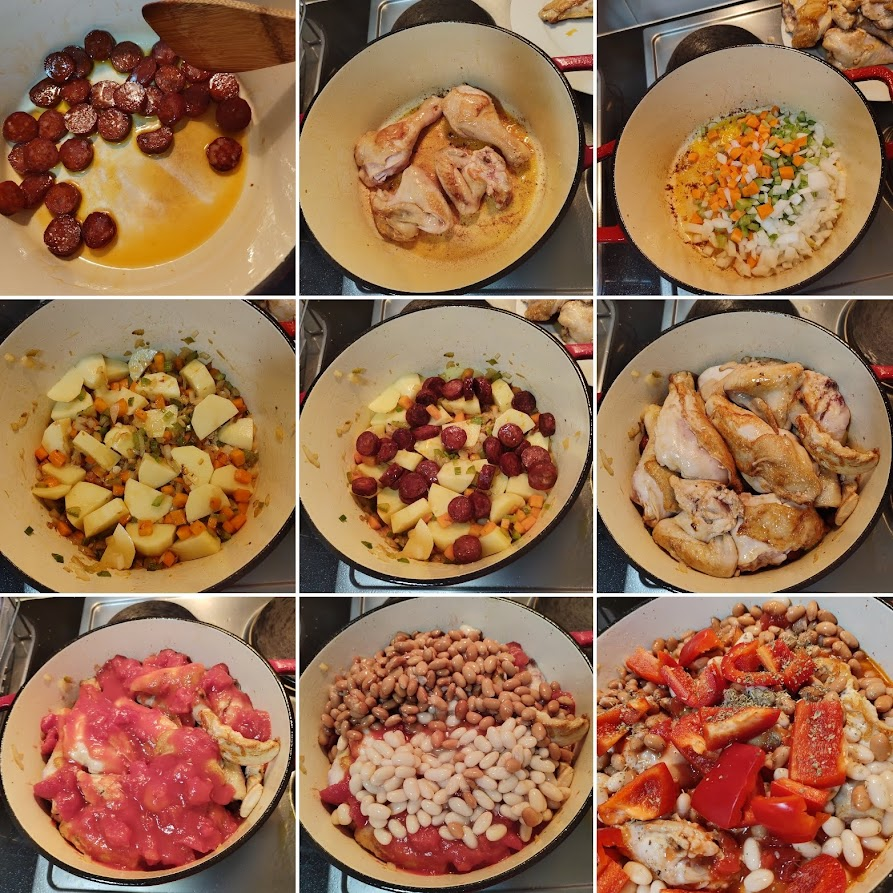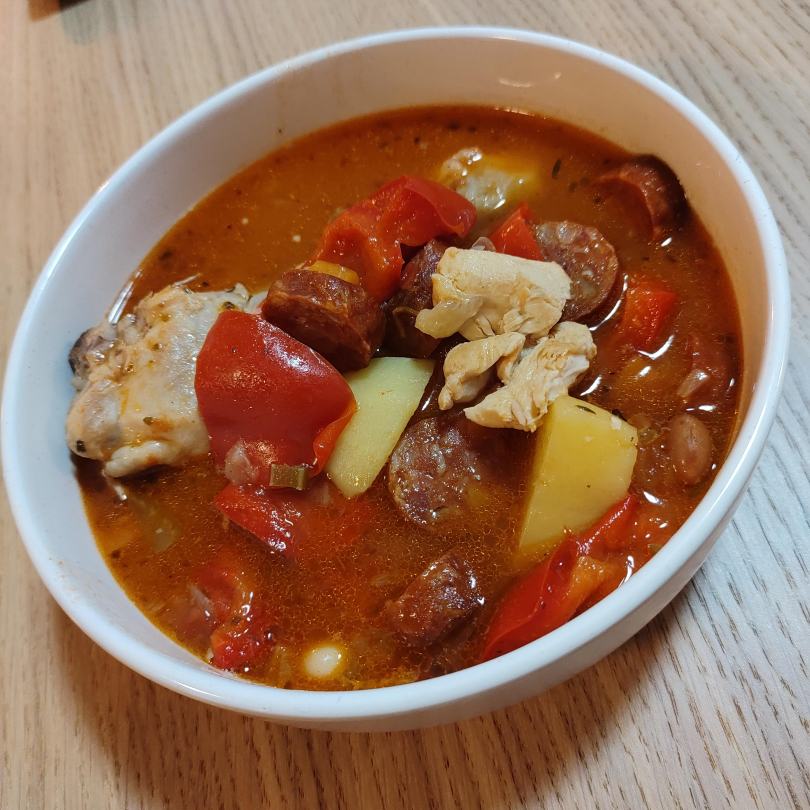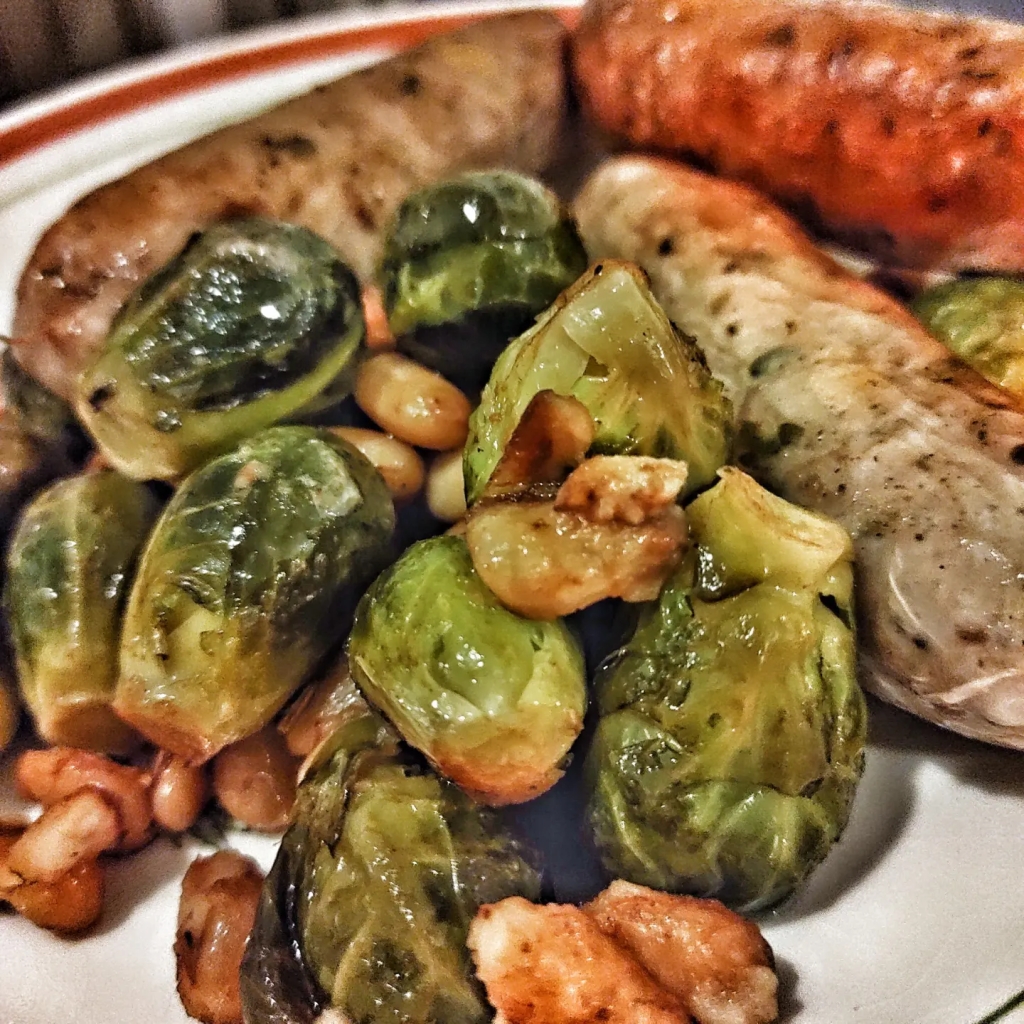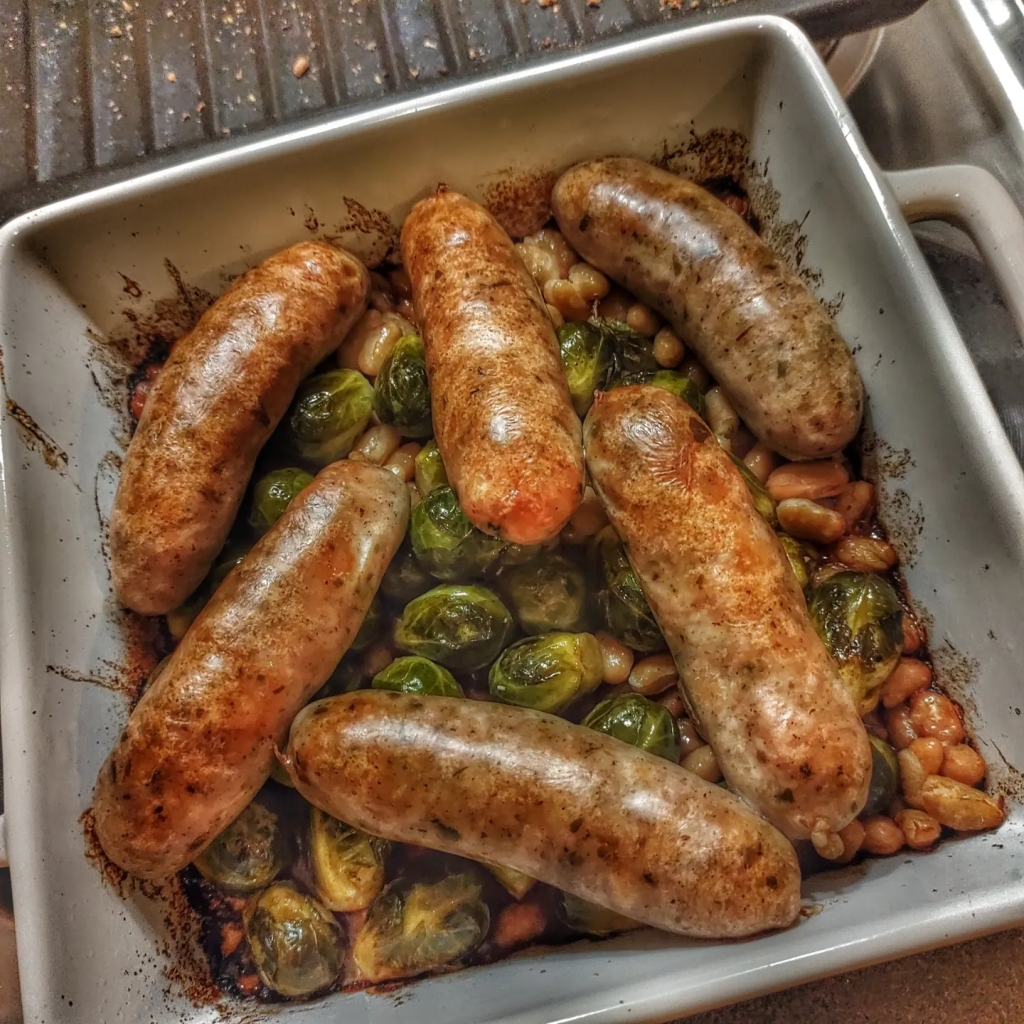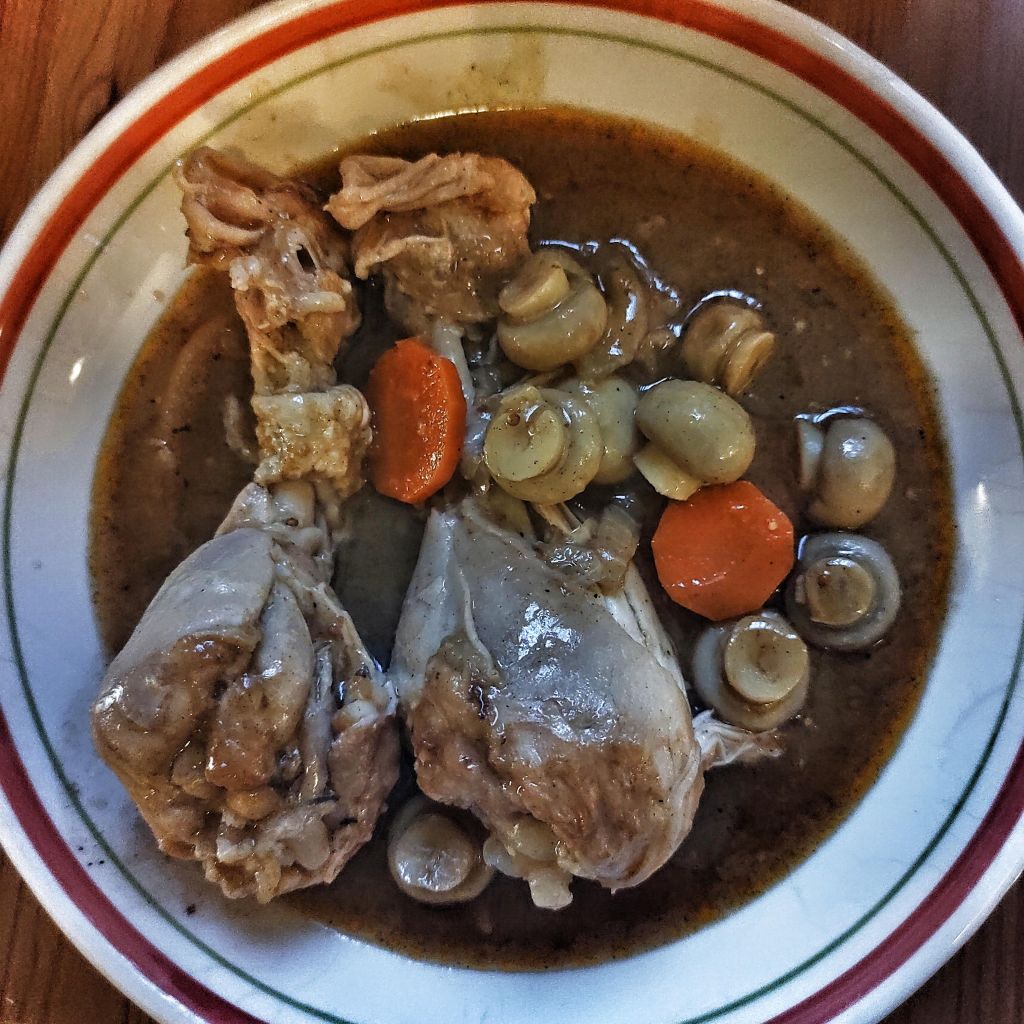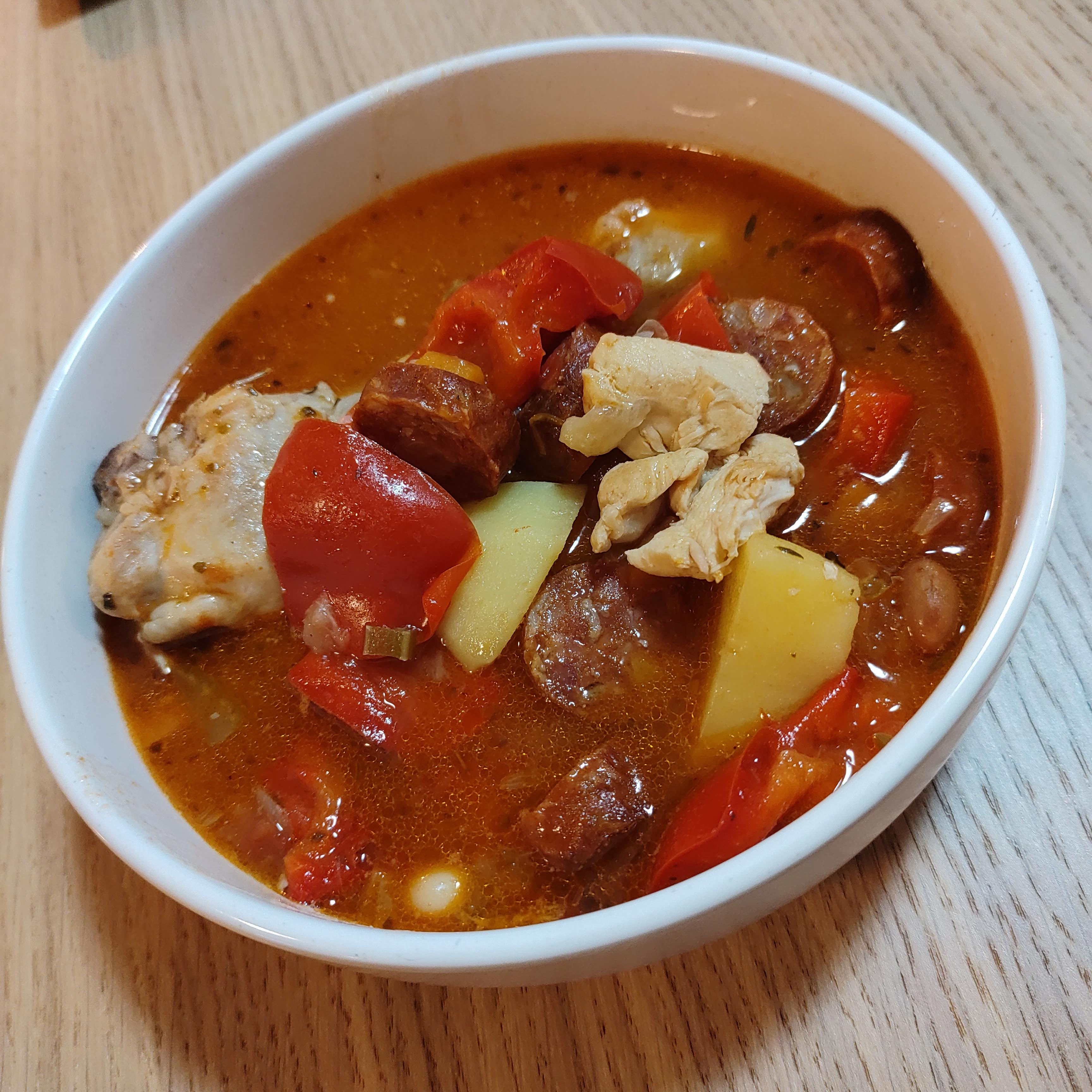
This isn’t Spanish, but it’s nice to pretend it’s Spanish peasant food. It’s braised chicken with chorizo, potatoes, and beans in a tomato broth It does take a little while to make, but it’s not difficult, and spending time preparing it is perfect for businessmen who have spent the day in the city destroying each other’s reputations to take their minds off things for a little while.
Serves 4, generously, and will stretch to 6.
Ingredients
- 1 whole chicken (medium size)
- 2 chorizo sausages, chopped into discs
- 1 large carrot, diced
- 2 sticks celery, diced
- 1 medium onion, diced
- 2 cloves garlic, chopped
- 3 medium potatoes, roughly chopped
- 1 red pepper/capsicum (call it what you will), chopped
- 1 400g can diced tomatoes
- 2 400g cans cannellini beans or butter beans, drained but not rinsed
- 1 tsp dried mixed herbs
- A few strands of saffron (optional, and leave out if your purse doesn’t stretch to such extravagance)
- Chicken stock (from a cube) – about 500ml
You’ll need a 4L flameproof casserole or a cooking pot that you can place over direct heat.
Method
Begin by jointing the chicken. If you really can’t cope with the idea, you could use 6 chicken thigh cutlets instead, but jointing a chicken isn’t difficult, and it’s far more economical. I cut it up to end up with two breasts, two thighs, two drumsticks, and two wings.
Next, warm a little olive oil (or whatever oil you have) in the casserole over a medium heat and toss in the chorizo. Let this cook for about ten minutes, until the golden paprika oil from the chorizo is released, and the edges of the sausage start to brown. Then, with a slotted spoon, remove the chorizo to a plate and turn up the heat.
Now brown the chicken pieces in batches – around 2-3 minutes on each side. Don’t worry about getting crispy skin; it’s all going to be in liquid in the end, so it won’t stay crispy. After each batch of chicken is nice and brown, remove the pieces to a plate and set aside. Turn the heat back down to medium-low.
Now, add the carrot, celery, onion, and garlic into the pot, and soften these for around ten minutes, stirring occasionally. Then begin building!
Return the chorizo to the pot, followed by the potatoes, and stir everything together. Arrange the chicken on top of that before pouring on the tomatoes. Next, tumble in the beans, followed by the capsicum/pepper, herbs, and saffron. If you need to, wiggle everything around with a spoon so it all fits. Then pour in the stock – only as much as you need to barely cover everything. You won’t be able to really stir everything, but another few wiggles with a spoon should be enough to get everything conbined.
Now turn the heat down to low, stick a lid on the pot, and let it hang out, bubbling gently, for about an hour. If you feel the sauce needs thickening, you can make a slurry with some cornflour or potato starch and water and add that at around 45 minutes.
You can serve it on its own in bowls, but a couple of hunks of good bread to mop up the sauce wouldn’t be the worst thing in the world.
¡Buen Appetito!
